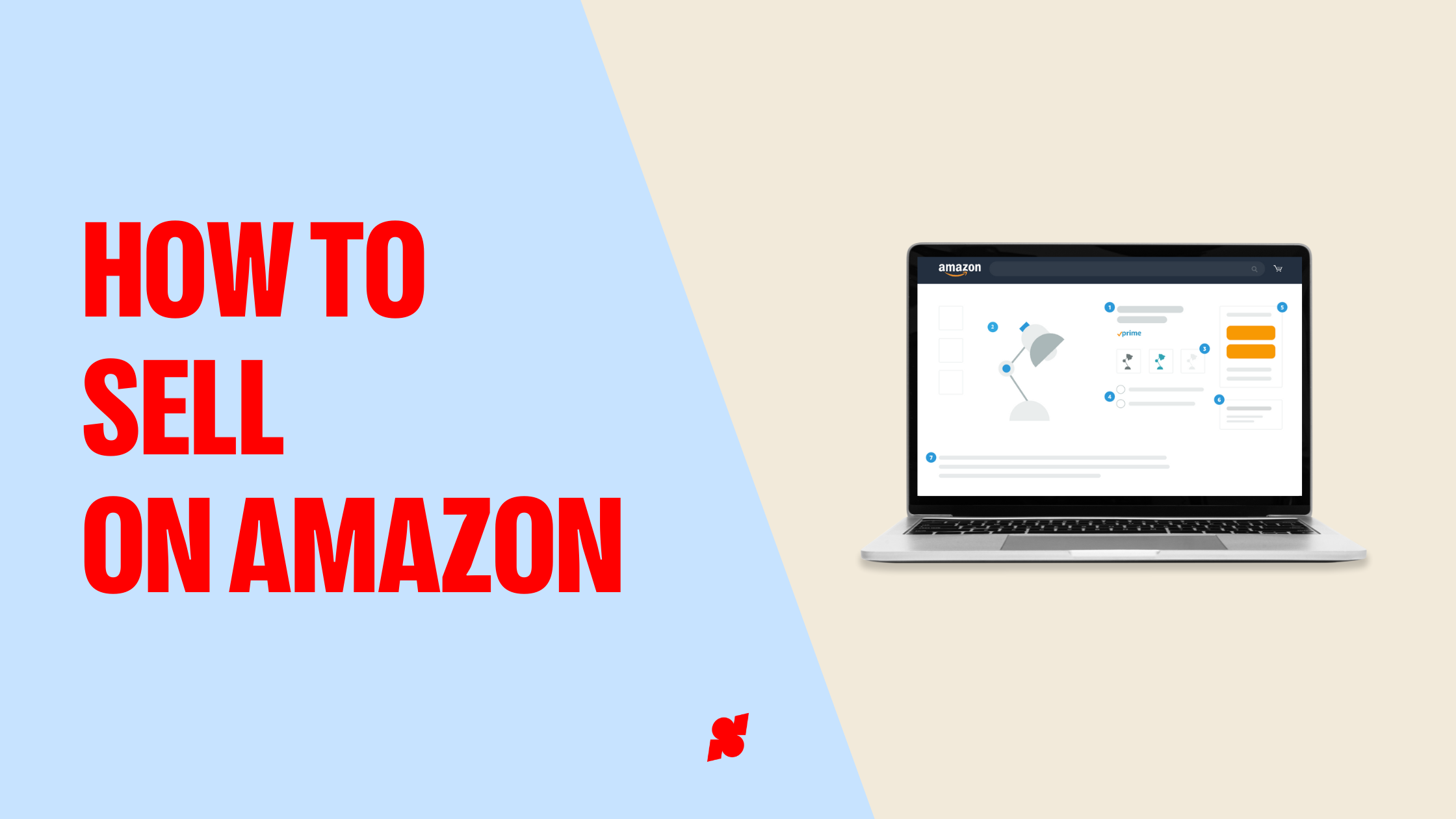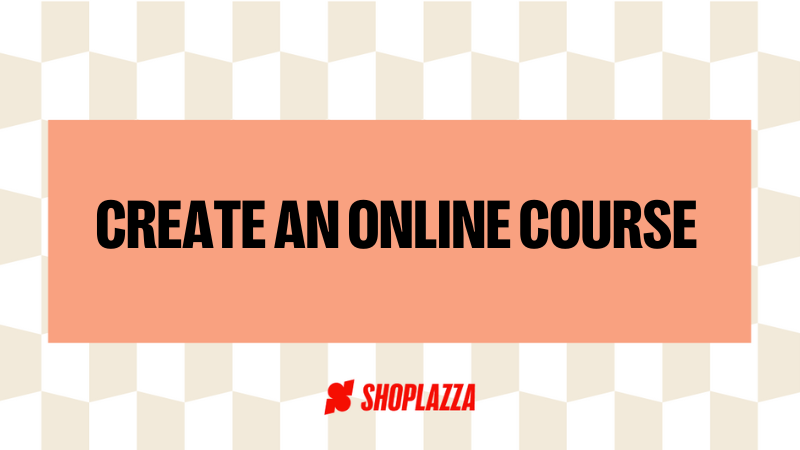
Interested in parlaying your knowledge and expertise into an online course? Here’s everything you need to know about how to create an online course. We’ve also selected some of the best online course platforms in the market so you can get started right away.
There’s no denying the power and appeal of online courses, especially after the past couple of years. Let’s face it: Who among us hasn’t enrolled in an online course during the pandemic? Maybe your pick was a gardening course. Or a knitting one. Or maybe even a baking one (remember how we were all baking our own bread back then?).
The thing is, online courses weren’t just a pandemic fad. Although they’ve been around for quite a few years now, it was only recently that their true potential as a digital product was effectively perceived by people who tick all the boxes below:
- They are interested in making money from home
- They want to build an e-business but are not interested in selling physical products, like clothes or decor items
- They are experts in a certain theme or area
- They are passionate about teaching
Sounds like you?
Great! So let’s geek out together: Open up your notebooks, grab your favorite pen and check out how to create an online course, because school is now in session.
Why create online courses?
Creating online courses is a great online business idea for people who are interested in forging their way into entrepreneurship but, as mentioned above, do not want to deal with selling physical products.
This means that, essentially, you'll be selling knowledge, and not a disposable item—and this fact already points to one of the great advantages of selling online courses: Not having to worry about some of the biggest roadblocks of more traditional ecommerces.
To put it simply, focusing your entrepreneurial journey on something like online course creation means not having to deal with thorny aspects like shipping and warehousing, packaging and unboxing experiences, and the horror of advertising clothes or shoes in the wrong sizing and thus having to define very specific return policies.
Selling online courses is also a great way to establish a passive income, since it involves creating content once and then selling it for an extended period of time and for different price ranges (more on that later).
After all, the beauty of passive income is that once the product (i.e., the course) is finished, all you have to do is market it accordingly. No further adjustments, tweaks, and no worrying about new product launches every few months or so.
Lastly, creating an awesome online course can also help entrepreneurs who wish to establish themselves as an authority within their fields. After all, the more put-together the course is—and the more relevant the content is—the higher the chances that word starts to get around.
This, in turn, can help online course creators gain visibility inside their own industries and also help them put their names in front of new followers and new business partners.
👩🏫Interested in cultivating a professional online presence? Check out our posts on branding and brand image.
How to create an online course in 7 steps
If this was a school class, now will be the part where the teacher asks the class to be extra quiet and sends out that fearful warning: “This will be on the exam, so pay attention.”
The process of how to create an online course will likely vary a bit depending on the specifics of what you’re interested in teaching, but generally, it’ll involve the 7 steps below. Don’t forget to check out some of the tips and extra notes that are hidden in there!
1. Find that sweet spot
The first thing on the list for anyone who wants to create online courses is to determine just what the course will be about, because you won’t go too far without a course topic in mind.
The best approach here is to try to find the so-called sweet spot: The intersection between a topic you master and an area that has a high demand.
This won’t necessarily be an easy thing to do, so here are a couple of ideas to tickle your brain:
- An online course on knitting can specialize in specific knitting patterns or even in specific techniques, like mega knitting or arm knitting
- An online course on food photography can focus solely on photographing desserts or a specific cuisine
- Entrepreneurs who know their jewelry can tackle different possibilities, like creating an entire course on how to sell jewelry, how to repair old jewelry, or even how to create and craft new items
Keep in mind that finding the sweet spot does not mean going overboard and creating an all-encompassing online course. It won’t be feasible for you and will certainly not be enticing enough for possible students — so concentrate your efforts on crafting a value proposition that is aligned not just with your expertise, but with students’ expectations, too.
Also, remember that you can always create new online courses later on, should the opportunity to scale up the business arises.
🍎 How to create an online course: A tip from one teacher’s pet to another
People who are interested in tackling a course topic with high demand don’t need to be 100% discouraged. Instead of moving on to another topic right away, try to determine what you can offer to students that is truly unique.
This uniqueness can take many forms, so here are a few examples:
- A different skill: A lot of knitting courses teach how to create beautiful clothing with easy and simple techniques, but there are not a whole lot of courses that teach knitters how to read knitting recipes. Those were wildly common back in the day, but have since been largely forgotten. As a result, there are tons of knitting patterns that can be rediscovered if people learn how to read those recipes — so there’s a different skill right there.
- Professional connections: Entrepreneurs looking to create online courses that follow a bit more along the lines of “how to build a career in this niche” or “how to build your own online store” can invite a special guest to talk to students. This will give them the opportunity to showcase their work to someone who knows about the industry and is equipped to give them special pointers and career advice.
- A discount to buy equipment: An online course on shodō (a.k.a Japanese handwriting) can offer students a special discount to purchase brushes, paper and ink in a few selected stores.
2. Determine who the students are
In order to create the proper course material and topic, it’s also necessary to determine who the ideal students are—or, rather, who the target audience is.
When it comes to identifying a target audience, much of the process involves determining what are the common traits that possible students will share. These traits can range from demographic stats to specific interests and even cultivated abilities.
A good way to start this process is to ask yourself the three questions below:
- Who are my students and what are they looking for? Are they at a specific point in their careers and need an online course to acquire a new skill or refresh their skill sets?
This is perhaps the most crucial question to ask, since it’ll also dictate much of what we’ll cover in the next steps—from determining the course content to deciding on an ongoing marketing strategy.
- What experience do they have and do they require any? Part of what makes successful online courses so successful is usually the fact that they are aimed at a very specific target audience, this specificity has to do with the necessary skills or abilities students need (or do not need) to have.
An online course about journaling for beginners, for example, probably does not require students to have any previous knowledge about the topic—while a course aimed at budding app developers will probably be ideal for students who already have at least a medium-level knowledge about coding.
This is also a question that will likely come in handy when you start tackling the course outline, as it’ll help determine what the starting point of the program will be and what topics will be discussed.
- What will they be able to do with the knowledge I shared? Lastly, consider what the online course’s target audience will be able to achieve after completing the course.
Try to answer this with concrete goals: In a beginner’s online course about knitting, students should be able to complete one piece by themselves. Or, maybe, in an online course aimed at people who want to start their online business, students should be able to complete a business plan by the end of the term.
🍎How to create online courses: Illustrating what we’ve just discussed
To illustrate this step, let’s go back to the shodō course we mentioned in step 1 of how to create an online course to check out 3 alternatives on how to determine the target audience for 3 different kinds of shodō courses:
1. Students who want to perfect their calligraphy skills, are proficient in Japanese and will be able to take their Japanese studies to a new level2. Students who have the head of shodō as an art form and a calligraphy technique, but are not proficient in Japanese and want to discover an artistic hobby
3. Students who have never heard of shodō, have no experience in this topic, but are looking for therapeutic pastimes that involve artistic expressions.
3. Settle on a course format
The third step on how to create an online course revolves around deciding the type of course you’d like to teach.
Type, in this case, should be understood as format or, better yet, hours: How many hours will you need to share all the content you want to cover?
To start answering this, we recommend weighing in both the sweet spot of your online course and the target audience specifics, as both of these will play a huge part in helping you define what course format will suit your idea best.
Generally speaking, though, there are three big formats from online course creation you can choose from. Remember that because we’re discussing online courses as a digital product that can generate passive income, we’re mainly dealing with asynchronous courses (i.e., pre-recorded classes that do not happen live).
- Mini-course: This is probably the most popular format to bet on, especially if you’re creating your first online course. It’s a great option in terms of effort, because you won’t have to stress about creating a whole lot of content, and it’s also pretty popular with students overall.
A mini-course is usually about 2 to 5 hours long, and it can be divided into how many lessons or classes are more suited to the course content. For example, a two-hour beginner’s course on knitting can have 4 classes of half an hour each, while a practical course on baking can perhaps have 5 classes of 1 hour each.
- Mid-length course: This format is more suited for an online course that has its goals set on taking students beyond the basics and diving deep into a specific topic.
It usually boasts something like 10 to 15 hours and it’s not necessarily a course that people are able to complete within a week or two but rather in two months or more. Traditionally, it’s a great option for courses aimed at intermediate-level students, and it’s also a great fit for an online course that has as its goal sharing a specific technique.
Possible examples include, for instance, a 10-hour intermediate course on Adobe Photoshop for photographers or a 15-hour intermediate course on how to repair damaged jewelry.
- Long-duration course: Lastly, the long-duration course, is a format that is used by a lot of profitable online courses out there.
While not necessarily the best fit for everyone, this can be a great option for entrepreneurs who already have a successful online course and want to expand their reach with new courses. That’s why courses that follow this format tend to be around some 20-hours long.
Here, the idea is to not only equip students with a whole set of professional skills, but also to encourage them to create an actual piece of work for their portfolio.
For instance: If you’re reaching an online course about creating an online shop, then by the end of the course your students should be able to create their own online shops. If you’re teaching them about fashion, then they need to design and sew at least one piece after completing all lessons.
🍎Bonus tip: Teaching a masterclass
While “masterclass” can also be used as a term for a multi-class course, it’s more commonly used to identify a sole class given by an authority on a specific area. The format is usually more oriented towards offering an overview of a topic the teacher masters, while preferably also giving some basic, actionable steps for students to follow.
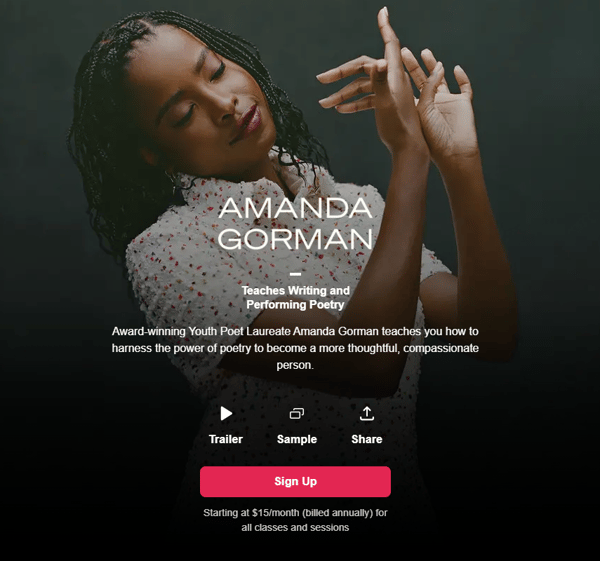
The tricky part about marketing a masterclass is that it’s usually a term associated with high-profile lecturers and experts. If you’re starting out, offering a masterclass might seem a bit presumptuous and therefore a bit risky.
However, once you’re already established within your own niche and online community, it’s definitely a strategy worth pursuing as it’ll help expand your reach.
4. Settle on how classes will work
Next up on how to create online courses is deciding how you’ll mold the course content you want to teach into the course format we checked out in the 3rd step.
To reach a decision, you might want to consider the three aspects below:
- Video techniques: While we do recommend that you appear on camera regardless of what course topic you’re teaching, it’s also important to decide how you’ll showcase, illustrate and explain your content.
This is why some of the techniques you might explore — beyond the old but reliable PowerPoint presentation or Canva slides — are screencasting and voiceover. Both serve different purposes, but can be powerful allies to create a profitable course.
With voiceover, you’re dubbing over a bit of content that needs to take up the whole screen. This is a great option if you’re planning on including third-party content in your online course, since it’ll allow students to focus solely on the content and listen to your voice.
Screencasting, for its part, is when you share your computer screen with the students to give them a step-by-step on how to perform a specific action. While it’s possible to record the screen without audio, we recommend recording it with both audio and webcam on so people can see you.
- Supplemental materials: Another thing that should be taken into consideration during the online course creation process are the supplementals that you’d like to share with students—like a special eBook or practical workbook with a couple of exercises.
This can be especially helpful depending (again) on your course content and potential students. It’s also a great way to get students to engage with your online course and potentially recommend it to other people, since those are materials they can keep and go back to later on.
- To quiz or not to quiz: If you’re teaching a skill that requires both practice and theory—like photo editing, app development, or analyzing data on the Google Analytics console—perhaps it’s a good idea to include some quizzes along the course to make sure students are actually following through and understanding everything.
🍎 How to create an online course: A tip from one teacher’s pet to another
A great way to help boost student engagement and interact with your students is promoting a special live class during the online course. You can schedule it to take place during the middle of the course, right after a quiz or maybe after all classes are completed.
The idea is to create a live session like you would an Instagram Live, so students don’t necessarily have to attend but can rather send out questions in advance. In this scenario, you can take your time replying to them and explaining the areas they’re having trouble with.
Since you can take this live session to a social platform like TikTok or Instagram, it’s also a great strategy to help you get more followers.
5. Create a course syllabus
Step #5 of how to create an online store involves assembling a course syllabus, so you can share it with potential students and use it on your marketing materials.
Generally speaking, a syllabus is where you’ll sketch out the course topic, explain how many hours the course will have and how those hours are divided. It’s also the place to align expectations and set out the concrete goals students will be able to achieve after completing the course.
A great example of how to create and display a good syllabus can be found on Domestika’s website. All of their featured courses come with a table of contents and a detailed explanation of each module, so potential students can analyze just what they’ll gain out of the experience.
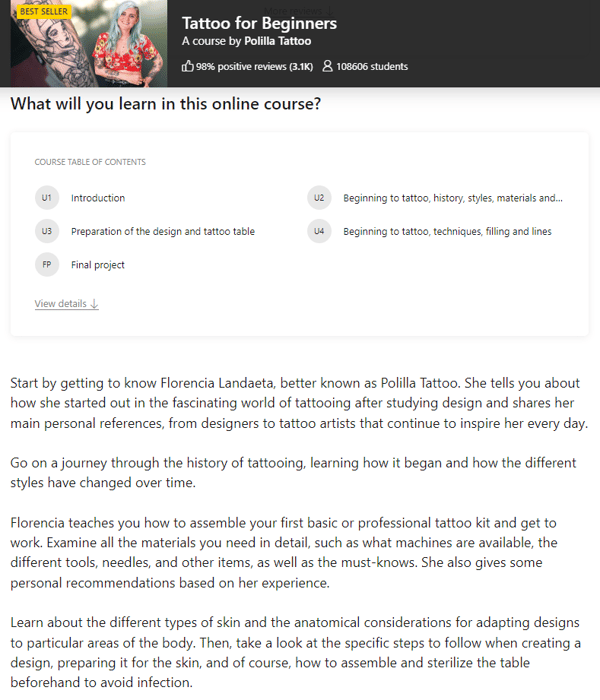
Also, remember to take this opportunity to introduce yourself, detailing your credentials so you can build authority and show your target audience that you’re the skilled teacher they’ve been looking for.
At the end of the landing page with the course syllabus we showed above, there’s a small teacher bio like this one:

This bio ticks all the right boxes. It’s short, engaging, and also gives out all the credentials of this teacher so students can feel confident they’ll be in good hands.
6. Calculate how much you’ll charge
Setting a price for an online course can be tricky since you’ll have to take into consideration a couple of different factors—like the current price range offered by the competition, how much your expertise is worth, the actual time you spent creating the course materials and recording the lessons, and how much students are willing to (and are able to) spend on an online course.
To make your offer more appealing to students, you can toy around with different pricing options that offer specific rewards.
You can, for instance, do a free live webinar after publishing the course online. This can help encourage students who are on the fence about signing up, as it’ll give them a chance to get to know more about you and the topic you’re teaching.
Then, right after the webinar, send out a special limited-time offer for those who watched the event, thanking them for their attendance and encouraging them to sign up for the course. The discounted price, paired with the excitement of attending the webinar, will likely generate good results for you.
We’re almost there: There’s just one final step on how to create an online course!
7. Get the ambiance just right
The last step in how to create an online course is about the ambiance―or, better yet, the aesthetics of how you’ll present your content.
Here, the idea is that you should focus on both the technical aspects of how you’ll record the videos and on the visual materials you’ll show to students in order to make their learning journey as memorable as possible.
On the technical side of things, make sure to check out if your webcam is working properly, if you have a good camera and a soundproofing mic, and if the background is suited.
As for the visuals, make sure to polish up both your look and your content. Remember that you’re selling your expertise, so dressing up wouldn’t be totally inadequate. This doesn’t mean that you need to put on a full face of makeup and dress to the nines, but a nice, put-together look may very well do the trick.
And when you create your content, double-check everything to ensure it’s visually pleasing and easy to follow―so say your goodbyes to Comic Sans right now!
🍎Bonus tip: Use captions and go international
If you’ve got your sights set on catering to an international audience, a great way to do that is by captioning your videos in different languages. This can be a huge selling point for students who might be interested in your content but will likely be put off if they aren’t fluent in English.
Top 6 best online course platforms
Phew! We’ve covered the “how to create an online course” part. Now it’s time to check out some of the platforms that will allow you to actually create online courses and put them out into the world.
Here are a couple of things that you should keep in mind when selecting the platform that will house your online course:
- Price: Financial health should always come first for a business, and that’s exactly why you should pick an online course platform that suits your current budget. There’s no need to go overboard and pay the highest tag price now if this will affect your profit margin and your break-even analysis down the line.
- Scalability potential: You might be starting out with just one online course, but if you do decide to scale up your business to create and sell more online courses later on, it’s important to work with a platform that can offer you all the help you need to make this move happen as smoothly as possible.
- Required skills: You may come across a powerful online course software while doing research online, but what happens if your top pick requires professional coding skills in order to properly create an online course… And you don’t know the first thing about coding? In this case, it’s best to go for an online course platform that already offers a complete solution to future teachers.
- A suite of tools: Does the online course platform you’re checking out has built-in tools that are useful and easy to use? Can they help you grow organically and be of assistance when you start the course creation process?
1. Thinkific
Thinkific is one of the best online course platforms currently on the market, and for good reason: It has a free monthly subscription that allows potential users to test-drive their platform and create an entirely online course.
It’s also a great option for entrepreneurs who are thinking about scalability potential, since it offers a ton of easy-to-use tools—including a special App Store and a Marketplace filled with top professionals to help you grow.
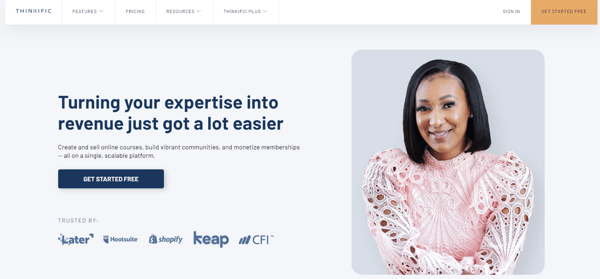
2. Kajabi
Kajabi is the perfect tool for entrepreneurs who don’t know much about tech, coding, and other specifics, but still want to create a stunning online course. It’s also the ideal solution if you want to develop a podcast, start a coaching business or even a membership-oriented shop.
While its pricing is on the higher-end, it does offer a 14-day free trial in all its subscription plans. It also boasts a host of helpful resources, like webinars, workshops, and the Kajabi University—that comes with training videos, downloadable resources and a whole lot more.
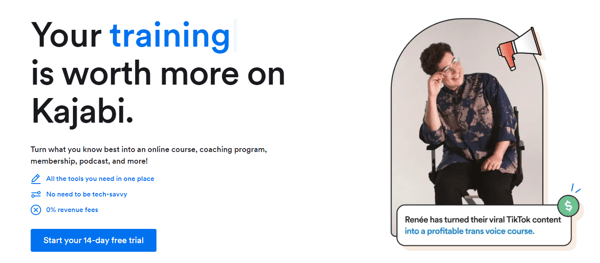
3. Coursify.me
Coursify.me is another great tool for people who want to learn how to create an online course, not to mention the fact that it’s probably the best one in terms of usability.
The customization tools are really intuitive, the platform itself is SEO-oriented so entrepreneurs can assemble courses that appeal to both students and search engines, and it also offers a free subscription plan that is pretty outstanding.
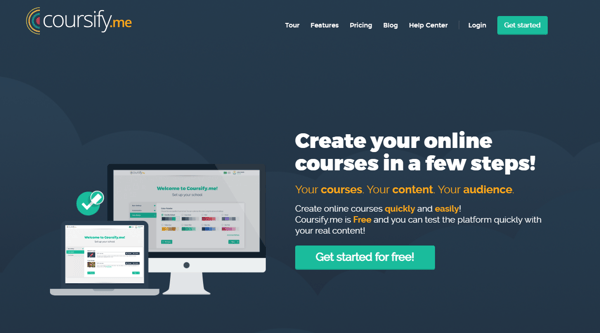
4. Teachable
If aesthetics are important to you, then Teachable will probably catch your attention.
But apart from its cool looks, Teachable is also one of the best platforms out there for people interested in creating and selling online courses, digital downloads and coaching sessions. Its tools require no coding experience whatsoever and it also offers a pretty neat free plan.

5. Podia
Podia is a website builder dedicated to both people who want to sell online courses and to influencers interested in building relevant communities with their followers.
It’s really easy to assemble an online course on their platform, mainly because the only hard work you’ll have to do is upload the videos. After that, it’s all smooth sailing and tweaks the customization options to make sure everything’s on brand.
While Podia does have a free subscription plan, beware: It only allows you to create a course, not publish it.
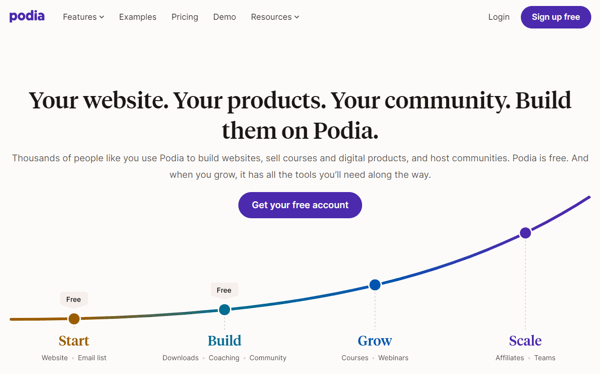
6. Teachery
Teachery is perhaps the cutest-looking platform for online courses that you’ll find online. It’s also one of the coolest ones, because it has only one subscription plan (which you can pay for on a monthly or yearly basis).
Currently, this platform offers you the chance to create unlimited courses, create a custom domain, work with a pretty insightful analytics tool and also join in on an affiliate program.

🍎Bonus tip: Try out online course marketplaces
If you’re interested in how to create online courses, another option worth pursuing is creating specific courses for online marketplaces like Skillshare, Udemy or Domestika.
The thing is, these marketplaces usually have some strict standards to validate and approve their online courses. They also define the pricing, so you won’t have a lot of control over the outcome and the profits you might reap.
A few ways to advertise your online course
We’ve got only one more topic to discuss: How to advertise online courses. This is crucial ground to cover, especially because you need to attract students to start generating revenue.
Below are a couple of ideas to help you get started:
- Promote it on your blog: If you’re intent on positioning yourself as an authority on a given topic, it’s highly likely that you’re already using more traditional channels, like a blog, to talk about your area of expertise.
If that’s your case, then consider creating a special post about the upcoming course you’ve got planned. You can give a brief outline of the course, discuss a few of the materials you’ll be using and even set up a CTA that redirects readers to the sign-up page.
- Send out special notices in your newsletter: Email marketing is always a great strategy to have up on your sleeve, especially because it tends to convert really well when it’s sent at the right moment.
Try to create a message that’s concise, highlighting how potential students can sign up and what they’ll learn during the course. If possible, include a snippet of one of the lessons to make it even more appealing.
- Publish teasers of the course on YouTube, TikTok or Instagram Reels: Video content is always a plus, and since you’ll have a ton of video for your online course, why not repurpose bits of it as teasers?
You can post some teasers of the real deal, to give your followers a taste of what’s to come, or maybe adopt a different approach and post those bloopers that made you laugh really hard. The goal here should be to engage with followers and spread the word about your new online course.
Ready to start your own online course?
And there you have it: All the basics about how to create an online course.
We won’t quiz you about it, so don’t worry. Just make sure that, when the time comes, you’re able to implement all the steps and extra tips we shared. After all, we want to see you succeed and create a successful online course. Go for it!


